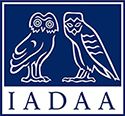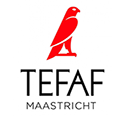Description
Ancient ballgames were often ritualistic in nature and an honor to participate in, with the power to change the lives of the men playing. It was such an important aspect of the Mesoamerican world that it was played by the gods; from the legendary twins of Mayan mythology to the lords of the day and night. The famous ancient Veracruz city of El Tajín has 17 such ball courts, the oldest of which dates back to 500 AD. One of the prizes that might have been awarded to particularly skilled players is the palma.
Together with another enduring symbol of the Mesoamerican ballgame, the yoke, the palma would be joined to the yoke in a manner that allowed the two to be fitted together. The incised foot of the palma, cut at an obtuse angle, could sit and be supported by a notch carved into the front of the yoke much like the hacha that came before it.
Tall and sweeping this palma is excellently carved; all parts of the piece were finely worked and smoothed, from the top of the fan to the delicate foot. The palma stands straight with a graceful curve to the upper edge, matching the carved fan on its flattened sides. Each of the four points of the fan is embellished by decorative roundels (jade beads) with small step-like shapes incised from each point to give a gentle feathering to the strong stone.
MM




